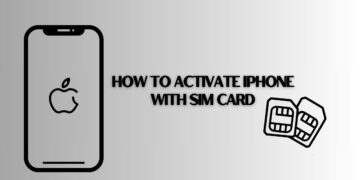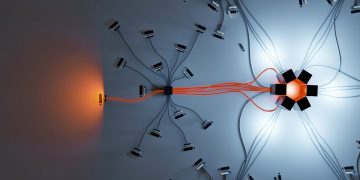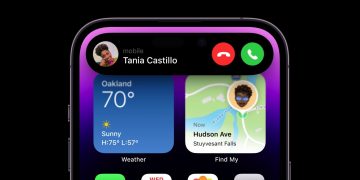Apple introduced Apple Watch Series 8 and the new Apple Watch SE, which brings groundbreaking technology and performance, and important safety innovations to the two best-selling smartwatches. Apple Watch Series 8 features the beloved design of Apple Watch, including an Always-On Retina display and a strong crack-resistant front crystal. With all-day 18-hour battery life, Apple Watch Series 8 builds on best-in-class health and safety features like the EGC app and fall detection by introducing temperature-sensing capabilities, retrospective ovulation estimates, Crash Detection, and international roaming.
The new Apple Watch SE delivers the core Apple Watch experience, including Activity tracking, high and low heart rate notifications, and Emergency SOS, as well as the new Crash Detection feature and a completely redesigned back case that perfectly matches the three classic case finishes, all at a more affordable price of $249 (US).
Both models are powered by watchOS 9, introducing new and more customizable watch faces like Lunar and Metropolitan, an enhanced Workout app, sleep stages, a first-of-its-kind AFib History feature, and an all-new Medications app.
Apple Watch Series 8 and Apple Watch SE are available to order now, with availability beginning Friday, September 16.
Wrist Temperature Sensing for Women’s Health
The menstrual cycle is an important marker of health, and many physicians consider it a vital sign. Apple Watch Series 8 features innovative new temperature-sensing capabilities that give women further insights into their health, designed with the same privacy as with all other health data.
Apple Watch Series 8 takes a unique approach to temperature sensing with a two-sensor design – one sensor on the back of the watch, nearest the skin, and another just under the display – reducing bias from the outside environment.
Nighttime wrist temperature can be a good indicator of overall body temperature. The sensors in Apple Watch Series 8 sample the wrist temperature during sleep every five seconds and measure changes as small as 0.1° C. In the Health app, users can see nightly shifts in baseline temperature, which can be caused by exercise, jet lag, or even illness.
Utilizing the new temperature-sensing capabilities in Apple Watch Series 8, users can receive retrospective ovulation estimates. Knowing when ovulation has occurred can be helpful for family planning, and Apple Watch Series 8 makes it easy and convenient by providing these estimates in the Health app. Temperature sensing also enables improved period predictions.
Additionally, with iOS 16 and watchOS 9, all Cycle Tracking users can now receive a notification if their logged cycle history shows a possible deviation, such as irregular, infrequent, or prolonged periods, and persistent spotting, which can be symptoms of underlying health conditions.
WatchOS 9
The latest software brings new features and enhanced experiences to the world’s leading wearable operating system:
- With international roaming coming later this fall, users can stay connected to a cellular network while traveling abroad. Plans can be extended to Apple Watch from iPhone for little or no additional fee and will be available with over 30 carriers worldwide.
- Users who are diagnosed with AFib can turn on the FDA-cleared AFib History feature and access important information, including an estimate of how frequently their heart rhythm shows signs of AFib, providing deeper insights into their condition.
- The completely redesigned Compass app in WatchOS 9 surfaces more in-depth information and three distinct views. The app displays a new hybrid view that simultaneously shows both an analog compass dial and a digital view.
- The Workout App in WatchOS 9 includes new in-session views, such as Segments, Splits, and Elevation, that offer more precise workout data. Users can also improve their training with advanced workout experiences, including Heart Rate Zones, Custom Workouts, Pacer, and coming later this year, Race Route.
- Sleep tracking in watchOS 9 provides even more insights with the introduction of sleep stages. Apple Watch uses signals from the accelerometer and heart rate sensor to estimate when users are in REM, Core, or Deep sleep.
Source by geeknewscentral.com






























